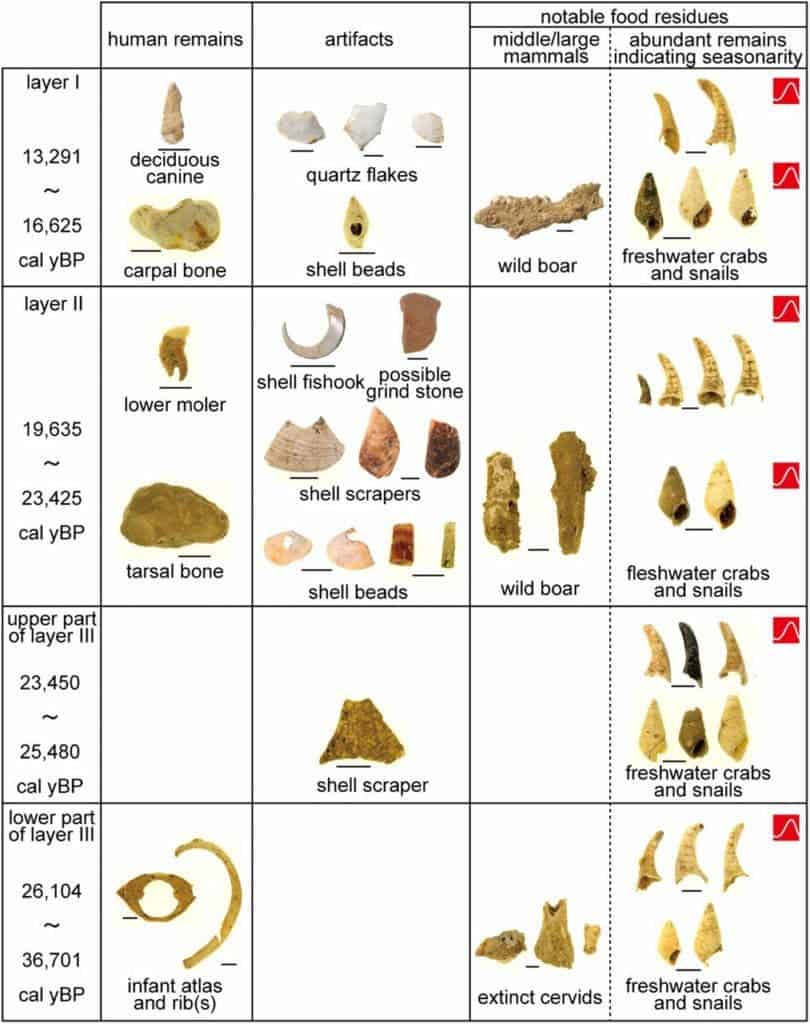Archaeologists have just found the oldest pair of fishing tools we’ve ever seen in a cave on Okinawa Island, off the Japanese coast. The fishing hooks are approximately 23,000 years old and were fashioned out of shells.

Pieces of finished (upper) and unfinished (lower) fishhooks found in the Sakitari Cave.
Image credits Masaki Fujita et al., PNAS, 2016.
Some 50,000 years ago, the first human settlers reached Okinawa and its neighbouring islands. How they managed to do this — and what they ate on the way — is still a matter of some debate. We just don’t really know the state of maritime technology at the time.
But a new set of fishing hooks found in Sakitari Cave, Okinawa, shows that its inhabitants had very good knowledge of how to live off the sea at a much earlier stage and on a much wider scale than previously believed. Japanese teams have been excavating the area since 2009 and have recently reported finding one complete and one incomplete fish hook created from sea snail shells. Carbon-dating pieces of charcoal found in the same strata as the fishhooks reveal they’re between 22,380 and 22,770 years old. Accounting for the method’s margin of error, this would make them the oldest fishing hooks ever found — previously the oldest were found in East Timor (dated between 23,000 and 16,000 years ago) and New Ireland in Papua New Guinea (20,000 to 18,000 years old).
In various layers of the same cave, archaeologists found evidence of charred eels, frogs, fish, birds or small mammals, suggesting they were cooked and consumed by humans. They also found human remains, seashell beads, and something they suspect may have been a grindstone. Based on the strata they were found in, this suggests that the cave has been continuously inhabited since at least 35,000 years ago. This came as a surprise for the team, as the island was previously believed to be too resource-poor to sustain a stable population.

Notable remains obtained from Late Pleistocene layers of Sakitari Cave. The red square symbols in rightmost column indicate probable seasonal hunting or gathering. Scale bars are 1 cm long.
Image credits Masaki Fujita et al., PNAS, 2016.
The charred remains of a crab found at the site are also significant, the researchers say, as it provides evidence of seasonal eating habits. The remains’ size indicates the animals were captured in autumn, during the carb’s mating season. By this time, they were larger and migrating downstream for reproduction — and this was, as the researchers put it, “also the season when they are the most delicious”.
All in all, the findings paint a new picture of our ancestors’ knowledge of the sea and the goodies that could be fished from it.
The full paper, titled “Advanced maritime adaptation in the western Pacific coastal region extends back to 35,000–30,000 years before present” has been published in the journal PNAS.









